Books
Everyone learns differently. While most people get the greatest benefit from working one-on-one with professional organizer, some prefer to start with a book (whether paper, digital, or audio) to embrace the guidance of experts at a distance. These are some of my favorite resources for helping you organize your papers, your office, your home, and your time. I’ve also shared some exceptional reads for organizing people in special circumstances (like those with ADHD, executive function disorders, and hoarding disorders), as well as advice for organizing seniors and students.
Organizing Your Papers
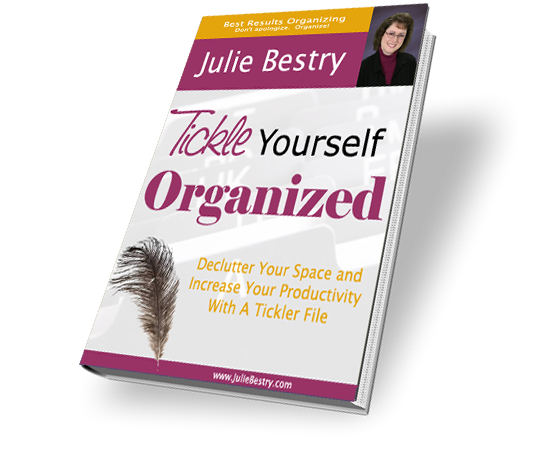
Tickle Yourself Organized by Julie Bestry
Busy professionals suffer from information overload and high pace expectations. It may seem like everyone expects you to know everything and take care of it all NOW! It’s easy to become overwhelmed, but there is hope. The Tickle Yourself Organized Special Report will teach you how to eliminate stress and save time and money – while still taking care of all of your responsibilities.
Do I Have To Keep This Piece of Paper by Julie Bestry
Toss your anxiety…and the papers you don’t need…and grab hold of your confidence and essential documents.
Organizing Your Office
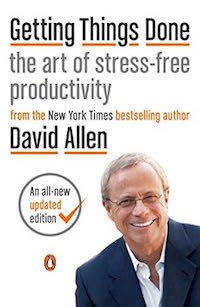 Getting Things Done: The Art of Stress-Free Productivity by David Allen
Getting Things Done: The Art of Stress-Free Productivity by David Allen
Getting Things Done, known among its practitioners on the Internet as “GTD”, has become a worldwide phenomenon. Of all the authors in professional organizing and related productivity fields, Allen comes the closest to communicating in book form what I’ve been telling my clients all along. By applying simple productivity principles for defining goals, staying focused, and getting work and life projects under control, the reader will overcome the anxiety and sense of “overwhelm” and GET THINGS DONE!
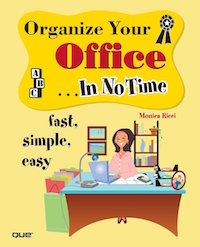
Organize Your Office In No Time by Monica Ricci
This book was written by one of my dear friends and colleagues, but I’d rate it highly even if were written by a stranger. Monica Ricci has a remarkable way of demystifying the complex and creating simple solutions where once there was only chaos. If you are trying to organize your office, whether it’s in the corner of the den or your corporate corner office, this is the resource for you.

Never Check Email In The Morning by Julie Morgenstern
This book (published previously as Making Work Work), from Oprah’s favorite professional organizer, does for work life what her other writing has done for home organization and time management. Simply put, Morgenstern tells it like it is, offering up the tried-and-true secrets for eliminating the interruptions, focusing on the tasks that yield productivity, and organizing and delegating work for maximum success.
Organizing Your Home
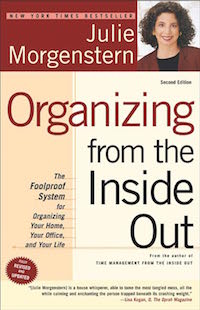 Organizing From the Inside Out by Julie Morgenstern
Organizing From the Inside Out by Julie Morgenstern
If you were watching Oprah or reading O Magazine the first time you heard of a professional organizer, it was likely this other Julie you saw. Her series of books on getting organized for home or office, helping your teenager get organized or managing your time are all modern classics. And classics are called that for a reason. The advice here is practical and timeless.
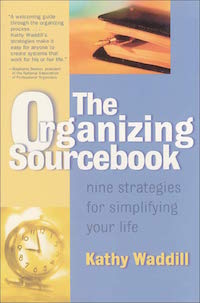
The Organizing Sourcebook by Kathy Waddill
Waddill is another of my colleagues who knows that “one size does not fit all” in the realm of organizing solutions. Instead, she offers nine strategies for simplifying home and work life, basing each on a real-life case study. If you like to learn by example, and are most comfortable seeing parallels between someone else’s life story and your own, this book will make you feel right at home.
Organizing Your Time
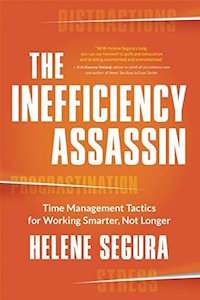
The Inefficiency Assassin: Time Management Tactics for Working Smarter, Not Longer by Helene Segura
It’s rare to find books that prompt revelations and spur specific, practical action, but Segura intuitively blends the strategic and tactical with so much charm that the reader has no choice but to be motivated toward improvement and continually guided to the next levels. She anticipates questions and delivers the goods, but gently points out when these are not the droids (I’m mean, solutions) for which the reader should be looking, helping build a more stable cognitive framework for identifying and achieving priorities.
Segura convincingly makes the case for creating clarity (in thought, word, and deed) as a life-saving measure – in a way that will resonate with the unfocused and hyper-focused, alike. Her vivid examples from real-life and pop culture, her anxiety-dissolving humor, and her own clearly-presented and comprehensive wisdom make The Inefficiency Assassin™ a book that belongs on every professional’s bookshelf.
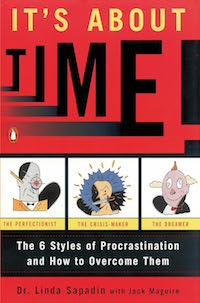 It’s About Time: The 6 Styles of Procrastination and How to Overcome Them by Dr. Linda Sapadin
It’s About Time: The 6 Styles of Procrastination and How to Overcome Them by Dr. Linda Sapadin
Procrastination is motivated by multiple factors: perfectionism, rebellion or resentment, fear of change and so on. Sapadin isolates six styles of procrastination and guides the reader in identifying which type he or she may be through case studies and quizzes. Based on the type of procrastination, she provides practical “How To” steps to change perspective and achieve high priority goals.
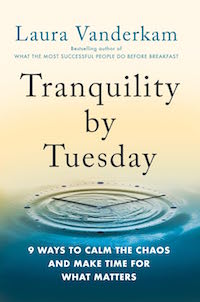
Tranquility by Tuesday: 9 Ways to Calm the Chaos and Make Time for What Matters by Laura Vanderkam
As with all of Laura Vanderkam’s books, Tranquility by Tuesday combines research with creative wisdom to present strategies you can start applying to your life immediately to reduce time wasted on things that matter less and invest your energies in a life with more robust rewards.
Organizing for Special Circumstances
ADD, Chronic Disorganization & Hoarding are all specialized areas of concern that hamper someone’s ability to get and stay organized. It’s not just a matter of saying “just do it” when complex obstacles stand in the way. These titles lay the groundwork for understanding the mental, physical and emotional issues at work and provide practical advice for overcoming the organizational problems caused by ADD, chronic disorganization, and hoarding.
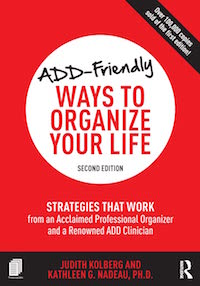
ADD-Friendly Ways to Organize Your Life by Judith Kolberg and Kathleen Nadeau, Ph.D.
Kolberg is an icon — a veteran professional organizer and founder of the National Study Group on Chronic Disorganization – as well as a respected friend and colleague in NAPO and NAPO-Georgia. Nadeau is a famed ADD researcher and expert. Together, they’ve developed a comprehensive guide to helping those with ADD get organized and get control over their lives, environment and time. If you are seeking practical ways to outmaneuver your ADD and stay organized, this is a magnificent resource.
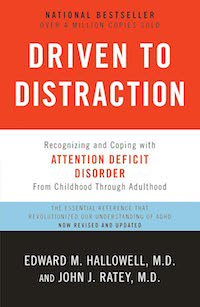
Driven to Distraction: Recognizing and Coping with Attention Deficit Disorder from Childhood through Adulthood by Edward Hallowell and John J. Ratey
This book is a classic – a study of attention deficit disorder written by two doctors who actually have ADD themselves. It discusses clinical causes of the disorder and treatments for it, but also offers hope and understanding. If ADD or ADHD is part of the underlying cause of your disorganization, this book is a great place to start understanding the “why” so you can start working on the “how.”
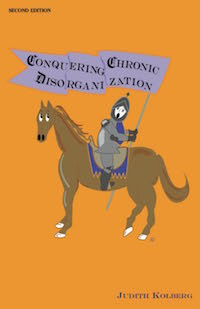
Conquering Chronic Disorganization by Judith Kolberg
Bar none, this is the best book available for understanding what it means to be “chronically disorganized”, which is entirely different from the everyday situational disorganization most people face. Who better to write the ultimate text on chronic disorganization than the founder of the National Study Group on Chronic Disorganization? Kolberg writes like she speaks, in a genuine, witty and charming style that both educates and motivates the reader. If you or someone you know suffers from chronic disorganization and conventional efforts haven’t helped, make this book your next stop.
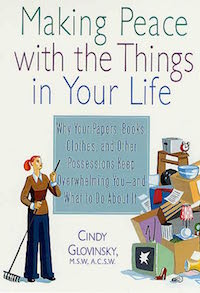 Making Peace with the Things in Your Life: Why Your Papers, Books, Clothes and Other Possessions Keep Overwhelming You-And What To Do About It by Cindy Glovinsky
Making Peace with the Things in Your Life: Why Your Papers, Books, Clothes and Other Possessions Keep Overwhelming You-And What To Do About It by Cindy Glovinsky
Glovinsky, another NAPO member, is a licensed psychotherapist as well as a professional organizer. These two separate but related fields of inquiry give her a unique vantage point from which to understand why the way we feel about the “stuff” in our lives prevents us from letting go, and how we get so attached to tangible items that the clutter starts to take over. If you find yourself warring with the clutter and just can’t let go, move Glovinsky’s perspective to the top of your reading pile.

Overcoming Compulsive Hoarding: Why You Save and How You Can Stop by Fugen Neziroglu, et. al.
Hoarding is not the same as over-ambitious collecting, shopping addiction or chronic disorganization. Hoarders’ brains are marked by biochemical changes and their behaviors are closely related to obsessive-compulsive disorders. The authors of this book define the syndrome as “the acquisition and saving of possessions that have little or no value” or a value perceived only by the hoarder, who “has great difficulty discarding the objects.” Case histories illustrate the damage hoarding does to relationships and quality of life, while the self-assessment exercises and discussion of treatment options (including cognitive therapy) provide hope for returning to normalcy.
Organizing and Downsizing for Seniors
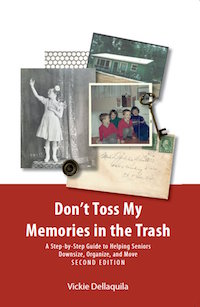
Don’t Toss My Memories In the Trash by Vickie Dellaquila
Downsizing for your golden years, or helping your parents or grandparents do so, can be fraught. It’s easy to get caught up in memories and fear that letting go of possessions means letting go of your identity. Dellaquila warmly and expertly advises readers on how to take the downsizing path to make more of senior living – just with less stuff to weigh you down.
Organizing for Students
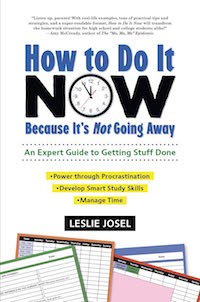
How To Do It Now…Because It’s Not Going Away: An Expert Guide to Getting Stuff Done by Leslie Josel
It’s not often in this era of hype that you find an author whose tone, approach, and content is so perfect for the subject and the audience that it makes you sit up and take notice, but Leslie Josel has done exactly that in How To Do It Now…Because It’s Not Going Away: An Expert Guide To Getting Stuff Done. Designed for high school and college students, this book is a no-nonsense, realistic approach to achieving academic goals…and reading it doesn’t feel like homework!
Right from the initial “Before We Begin” and the introduction, Josel connects with the reader, not as a finger-wagging parent or teacher, but with a wise and nurturing “cool aunt” vibe. You can imagine her saying, “Right, I SO get it! I know what you’re talking about and it’s painful. But I’ve got a plan! Follow me.”
It may be hard to imagine a procrastinating student (whether a freshman in high school or a senior in college) embracing a book on procrastination, time management, and study skills and having faith in a stranger to help him or her survive. But Josel immediately reels the reader in with “Does this sound like you?” examples that let us know this is not her first rodeo, and inspires confidence that she knows how to side-step the bull’s horns (and the BS).
Josel weaves reality checks into each of her chapters, helping students see past their initial assumptions about their own behaviors and about the different approaches needed for homework vs. studying vs. projects. With warmth, she commiserates with readers (about the annoyance of certain types of homework, about how most people aren’t actually taught how to study, etc.) and then she delivers solutions at three levels.
First, she addresses (and then adjusts) mindsets, so students can more clearly see the invisible obstacles in their way, including ones they’ve placed there themselves. She introduces useful concepts from the productivity field in which she is an expert, like the “now/not now” dichotomy of the time horizon, but she never strays too far into academia or research that she loses the reader. Instead, every concept is used to back up her guidance and improve students’ confidence that her advice will work for them.
Second, with her lively but grounded style, Josel provides practical, realistic behavioral changes with step-by-step instructions. Too often, productivity guides make sweeping statements when readers really need everything broken down into digestible snack-size portions. Josel clarifies each task, giving students just what they need — keys for what to do, how to do it, and enough “why” so that they can stay motivated. Moreover, she allies with readers to assure them that they are unique, and gives multiple ways to customize each step of their new systems. From guidance in analyzing time use to helping create a Personal Homework Profile™ – to using popcorn or a favorite tree (!) to yield success – each page has actionable wisdom.
Third, How To Do It Now provides an absolute banquet of resources, including digital and analog tools, with suggestions both interwoven in the text and in a categorized resource section, ensuring that students can access ongoing support. There’s even a companion website with downloadable forms and charts.
Although this is a book for older students, I would encourage both parents and middle-schoolers to familiarize themselves with the concepts, and can even see professionals who get overwhelmed by procrastination and demands on their time benefiting from this student-focused advice.
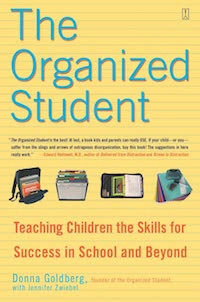
The Organized Student: Teaching Children the Skills for Success in School and Beyond by Donna Goldberg
Goldberg’s book is a classic. It’s my professional opinion that there is no better book for understanding how to help a student – whether in elementary school, middle school, or high school – gain control and mastery over his or her tangible and other resources, everything from backpacks and lockers to study spaces and schedules. Every parent, every teacher, every guidance counselor, and every student should read this book. (I often think the subtitle should be “No More Tears.”)
For other resources, click on the links below:
Associations and Organizations
Companies and Products
Affiliate Disclaimer: This site uses affiliate programs to help generate a supporting income which allows us to continue our work and provide you with the best overall experience and valued information. If you have any concerns, we suggest you do not click on any affiliate links found throughout the website or blog. If you are uncertain as to the resulting link’s destination, you may hover your cursor over the linked material to see where it goes. We will always provide you with a company or agency name, which you can type into any search engine in order to reach the site independently of our links. For more information, please see the Affiliate Tracking section of this site’s Privacy Policy linked at the bottom of each page.



Follow Me